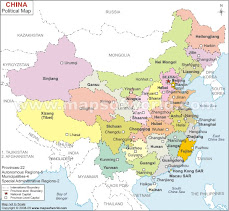
Ethnic Groups of China
There are 56 different ethnic groups in China. The biggest is the Han – about 91% of the population.
The other 55 are known as ethnic minorities. The biggest is the Zhuang (about 16 million) and the smallest the Lhoba (3,000). The Zhuang live in the Guangxi Autonomous Region . Some also live in the Yunnan, Guangdong, Guizhou and Hunan provinces. Lhoba ethnic minority have their homes mainly in Mainling, Medog, Lhunze and Nangxian counties in southeastern Tibet.
The break-down of minorities is as follows(in million):
Mongols(5.8),Hui(9.8),Tibetan(9.4),Uyghur(8.4),Miao(8.9),Yi(7.8),Zhuang(16),Bouyei(3),Korean(2),Manchu(11),Dong(3),Yao(2.6),Bai(1.8),Tujia(8),Hani(1.4),Kazak(1.2),Dai(1.1),Li(1.2),Gelao(0.6),Xibe(0.1), Achang(0.03),Primi(0.03),Tajik(0.04),Nu(0.03),Uzbek(0.01),Russian(0.02),Ewenk(0.03),Deang(0.02),Boan(0.02),Yugur(0.01),Naxi(0.3),Jingpo(0.1),Va(0.4),She(0.7),Gashan (4,000),Lahu(0.4),Sui(0.4),Jing(0.023),Tartar(5,000),Derung(7,000),Oroqen(8,000),Hexhen(5,000),Monba(9,000),Lhoba(3,000),Jino(0.02),Kirgiz(0.2),Tu(0.2),Daur(0.1),Mulam(0.2),Qiang(0.3),Blang(0.09),Salar(0.1),Maonan(0.1),Lisu(0.6),Dongxiang (0.5)
18 groups exceed 1 million (shown in bold).
The larger ethnic groups have certain degree of autonomy and self-government in some parts of China. There are five autonomous regions in China: the Tibetan People inTibet, the Zhuang in Guangxi,the Uyghur in Xinjiang, the Mongols in Inner Mongolia, and the Hui in Ningxia.
The central government renders financial and educational assistance and in recent years has focus on economic development and invests heavily in these regions.




